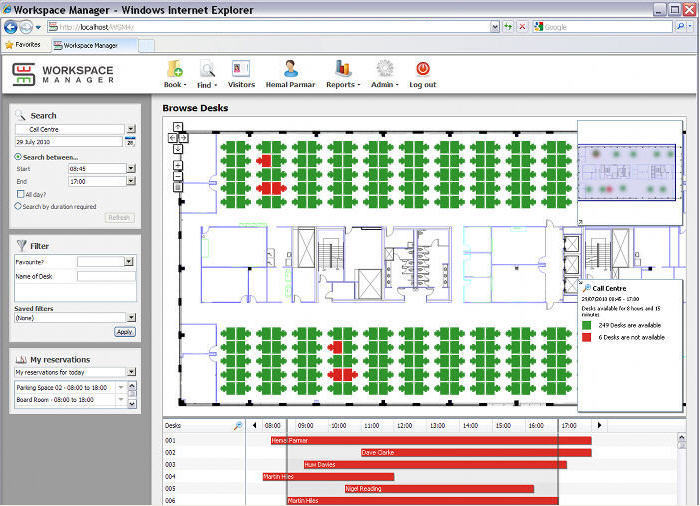

To rename the template navigate to the /apps_template directory from a putty session. Mv /vmfs/volumes/datastore/new_VMDK_file*.vmdk /vmfs/volumes/datastore/cloudvolumes/apps_templates/ Use putty to copy the new template (both the flat and stub files) from the current location to the /cloudvolumes/apps_templates folder.
#WORKSPACE MANAGER RES WINDOWS#
Remove the VMDKs from the Windows OS, making sure not to delete the disks from the data store.Ģ.1.11 Copy the new template to cloud volumes app template folder So, I’ve modified the scripts to use HKEY_LOCAL_MACHINE instead.) This can’t be updated by allvolattached.bat because allvolattached.bat runs as a system account. In the RES instructions, the HKEY_CURRENT_USER registry location is used. (Note: this differs from integration instructions provided by RES. Reg add "HKEY_LOCAL_MACHINE\Software\AppVolumes" /v AllVolAttached /t REG_DWORD /d "1" /f
#WORKSPACE MANAGER RES SOFTWARE#
#-RES SOFTWARE EXCLUSIONS BEGIN-Įxclude_path=\Program Files (x86)\RES Software\Workspace Manager\DataĮxclude_path=\Program Files\RES Software\Workspace Manager\DataĮxclude_path=%SystemRoot%\System32\drivers\appGuard_amd64.sysĮxclude_path=%SystemRoot%\System32\drivers\ImgGuard_amd64.sysĮxclude_path=%SystemRoot%\System32\drivers\netGuard_amd64.sysĮxclude_path=%SystemRoot%\System32\drivers\RegGuard_amd64.sysĮxclude_registry=\REGISTRY\MACHINE\SOFTWARE\Wow6432Node\RES\Workspace ManagerĮxclude_registry=\REGISTRY\MACHINE\SOFTWARE\RES\Workspace ManagerĮxclude_registry=\REGISTRY\USER\SOFTWARE\RES\Workspace ManagerĮxclude_process_path=\Program Files (x86)\RES Software\Workspace Manager\DataĮxclude_process_path=\Program Files\RES Software\Workspace Manager\DataĮxclude_process_path=\Program Files (x86)\RES Software\Workspace Manager\svcĮxclude_process_path=\Program Files\RES Software\Workspace Manager\svc The following entries should be added to snapvol.cfg in the new template: The disk can be pretty much any size you want, but practically speaking you’ll want something in the range of 1 to 40 gigs.Ģ.1.8 Add proper exclusions to snapvol.cfg within the new template. Ideally, it should be running Windows 7, but can also be running Windows 8.Ģ.1.2 Add a new virtual disk to the Windows machine.Īdd a thin provisioned disk to the clean virtual machine. This virtual machine should not have anything installed on it, and absolutely must not have the App Volumes agent installed. Stand up a virtual machine that has access to the storage where AppStack templates are located. Following are detailed steps for making this happen. This will make the provisioning of AppStacks easier as well as minimize potential for errors.Ĭreating the new template involves creating a new VDMK, mounting it, adding the contents of a pre-existing template to it, and finally adding specific customizations for RES. While you could just add the required edits to snapvol.cfg and allvolattached.bat to each of your AppStacks during the provisioning process, a better solution long term is to create a customized AppStack template containing these required edits. Also, each AppStack must be configured to execute specific commands from allvolattached.bat. Informative blog on cloning AppStacks and adding scripts to them:Ģ – Creating A Customized AppStack Template.įor RES to run properly in an App Volumes environment special exclusions for RES need to be setup within snapvol.cfg on all your AppStacks. VMware KB article on creating an AppStack template: This guide will walk your through all these major steps as well as elaborate upon the purpose and need for these steps.īelow are some useful references that informed this guide and are handy for gaining a more thorough understanding of the entire process.


If you’re leveraging RES Workspace’s Authorized Files features you’ll also have to make changes to your rules. Running App Volumes and RES together successfully involves creating a customized AppStack template, configuring RES to run special batch files at login/log off, and adding a few registry edits to the gold images you use for your desktop pools. Properly Configuring Authorized File Rules Creating A Customized App Volumes AppStack TemplateĪdding Required Registry Keys To Master Image


 0 kommentar(er)
0 kommentar(er)
